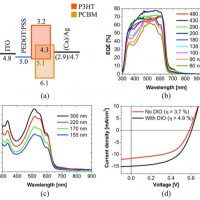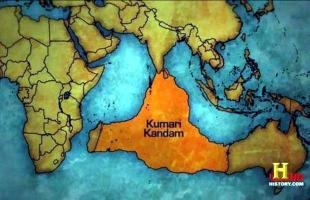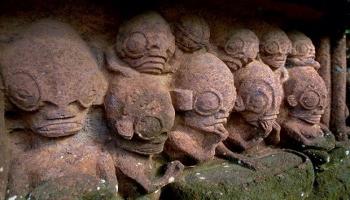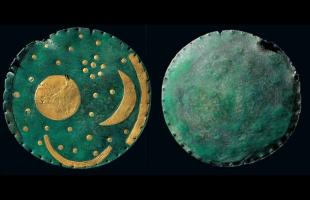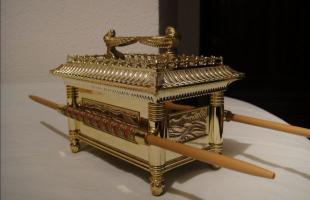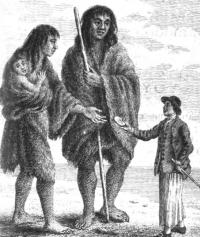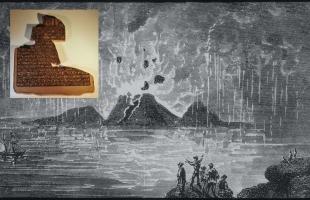The Kappas

We are in Mongolia, for generations now lost in time, ancient shamans tell of truly strange facts. All steeped in mythology which on one hand brings back traditionality but on other disconcerting lines makes one suspect that these stories are the result of a distortion of real facts, facts which seen from the point of view of modern man highlight very particular characteristics.
Very ancient oriental books and the religious "trances" of shamans tell of an afterlife world where monstrous creatures live. Among the many creatures, attention is focused on some humps, with black skin and long claws, it is said that these possess a skin that could be thrown away and therefore hide among men without being suspected.
These beings, according to the shamans, would travel through the sky and sea via large "flying shells", calling to the dead from the afterlife. Well, flying shells, glowing shields or fiery chariots, the term is very similar to the nomenclature of flying objects that pervades every mythological and religious text in antiquity; it is not even difficult to imagine "the black skins" as suits that could be removed, revealing a humanoid appearance.
In this regard, an eminent Japanese archaeologist and historiographer expresses himself: Komatsu Kitamura. The professor in fact says:
"The first suspicion came to me from a print discovered in an old text illustrating the history of the legendary "reed men", whose presence was very often reported in the Heian period (from 1900 to 1100). The Kappas, as these beings were called, were very strange creatures that old texts describe as "man-like", but characterized by monstrous deformations. From these descriptions the reed men appear as bipeds with webbed limbs and each equipped with three toes ending in a hook, with the central toe noticeably longer.Their skin is brown, smooth, silky and shiny, their heads are thin, their ears are large and triangular.
On their heads, according to the unanimous opinion of those who tell us about them, they wear a curious "hat with four needles", and their nose has the appearance of a proboscis which ends behind the shoulders, where it joins a hump in the shape of cassette.
Until some time ago we could only have classified these beings among some sort of ape transfigured by the imagination or among legendary creatures. How else could one judge, in fact, such strange figures and, according to ancient writers, capable of moving as quickly on land as in water? Today, however, we know that the fabulous dragons really existed as gigantic saurians who lived in the Cenozoic and that the giants of the sagas also belonged to reality. I therefore decided to consider the legendary Kappas a little more closely and suddenly I came to a sensational deduction: these beings, as they were described, seem identical to the divers of our times! Their brown and shiny skin could have been a waterproof suit, the hands and webbed feet could have been part of the equipment (the hooks were probably used for some usual maneuvers) and the "proboscis ending in a hump" is, after all, the same as the devices respirators powered by oxygen cylinders that we know well! The four needles in the hat remain: I don't dare follow the thought that comes to mind, but I'm tempted to do so, letting myself be convinced by the idea that they are antennas!" the webbed hands and feet could have been part of the equipment (the hooks were probably used for some usual maneuvers) and the "proboscis ending in a hump" is, after all, the same as the breathing apparatus powered by oxygen tanks that we know well! The four needles in the hat remain: I don't dare follow the thought that comes to mind, but I'm tempted to do so, letting myself be convinced by the idea that they are antennas!" the webbed hands and feet could have been part of the equipment (the hooks were probably used for some usual maneuvers) and the "proboscis ending in a hump" is, after all, the same as the breathing apparatus powered by oxygen tanks that we know well! The four needles in the hat remain: I don't dare follow the thought that comes to mind, but I'm tempted to do so, letting myself be convinced by the idea that they are antennas!"
Professor Kitamura was far too clear in describing his hypothesis, which in my opinion is highly credible, of course, divers who appeared more than a thousand years, or perhaps more, ago... it is another anachronism which if it invalidates canonical science, from the foundations for the development of paleoastronautics.








